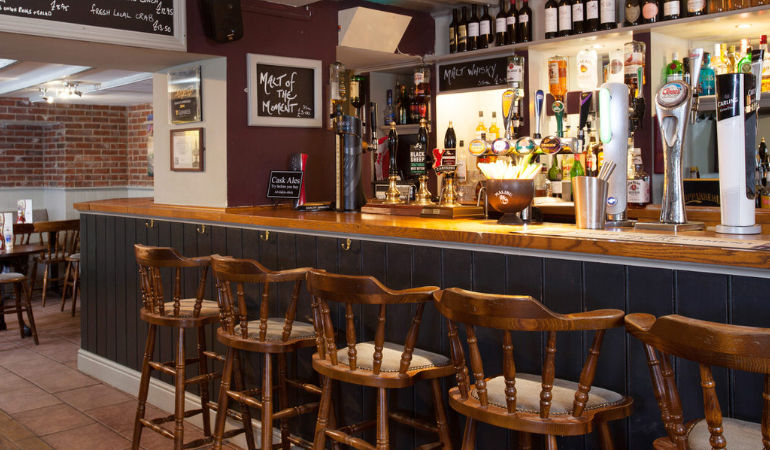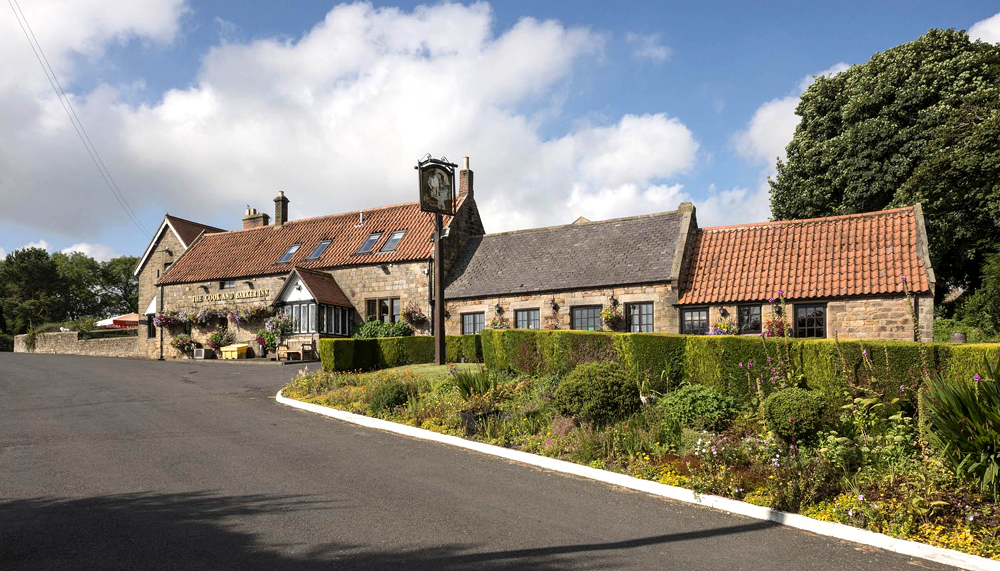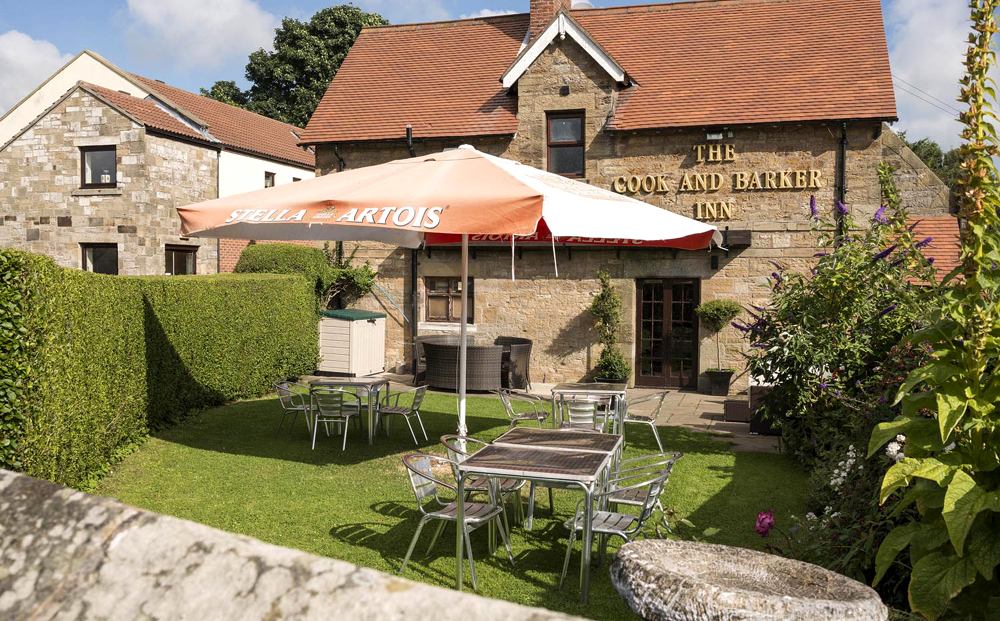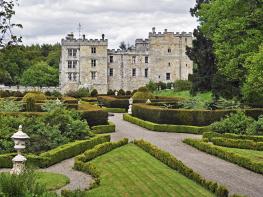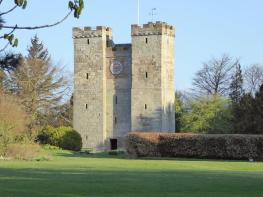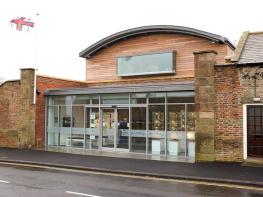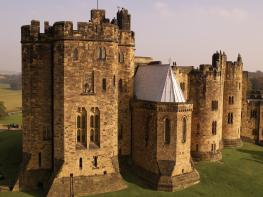Fieldside House is a handsome, stone-built family home in the pretty Northumberland village of…
Chillingham Park

4.5 miles (7.2kms)
About the walk
The walk climbs the hills overlooking the Chillingham Estate, famous for its herd of wild cattle that range freely in the park. The origins of the Chillingham cattle are not known. Their skull structure suggests similarities with the aurochs, so they may be descended from those ancient wild oxen that once roamed Britain. Recent DNA tests performed on dead animals show that they are unrelated to any other European cattle. Having remained uncontaminated by outside stock, they are probably the only genetically pure cattle in the world. They are always white, no coloured animals have ever been born, and they are definitely wild.
Captured cattle
The Chillingham herd has roamed its 365-acre (148ha) park for almost 700 years, since Sir Thomas Percy was granted a royal licence to fortify Chillingham Castle and enclose the grounds. The captured cattle may have provided a food supply. Over the years they have never been domesticated. The strongest bull leads the herd; he remains 'King', and sires all the calves born during his 'rule' until such time as another bull successfully challenges him. Even a birth is accompanied by a ritual, which must be observed before the new calf is accepted into the herd.
Care of the herd
The number of cattle has, in recent years, risen to over 100, but during the severe winter of 1947 their numbers fell to 13. Their wild nature meant that normal agricultural methods could not be employed to help them. The Chillingham cattle never seek shelter other than in the surrounding trees and will eat only grass and hay and, even when starving, will not accept oats or prepared cattle food. Fortunately the cattle are rarely ill, but when disease does strike, they cannot be approached by a vet. The tragic outbreaks of foot and mouth disease in 1967 and again in 2001 threatened the survival of the herd, at one point encroaching within 2 miles (3.2km) of Chillingham.
The Chillingham Wild Cattle Association was formed in 1939 to look after the welfare of the herd. The 8th Earl of Tankerville bequeathed ownership of the herd to the association on his death in 1971. When the 9th earl died in 1980, the Chillingham Estate was put up for sale. As a result of the intervention of the Duke of Northumberland, Chillingham Park was sold separately from the castle to the Sir James Knott Charitable Trust, which granted the association grazing rights for 999 years. Visitors can see the cattle in their natural surroundings, which look much as they did in medieval times. The cattle's behaviour, however, is unpredictable, so for safety reasons you can only enter the park when accompanied by the warden. Binoculars are recommended for a close view. Ranger-led walks within the park take place daily except Saturday from Easter to October, enabling you to see the cattle.
Walk directions
Begin along a track from the far end of the car park. Some 25yds (23m) beyond a barrier, abandon it for an unmarked path on the left. It climbs sharply through the forest to a ladder stile below Hepburn Crags. Bear slightly right and pick your way up between the boulders. The going is steep and occasionally a simple clamber, although care is required when it is wet or icy. Above the boulders, continue across sloping heath, from which there is a view to the ruined bastle, or fortified farmhouse, by the car park.
Pass through a breach in the embankment (part of an Iron Age fort sited on the hill) to a waymarked fork. Branch left to follow a clear path across the heather towards Ros Castle, the prominent hill rising on the skyline. Eventually joining a path from the right, walk on to meet a lane.
A path opposite continues towards Ros Castle, rising steeply across its eastern flank to a trig column beside the summit wall. It was the site of another Iron Age hill-fort and plaques on the viewing platform help identify the distant hills. Below to the northwest is Chillingham Park, where, with binoculars, you might catch a glimpse of the wild cattle. Ros Castle was presented to the National Trust in 1936 as a memorial to Viscount Grey of Fallodon KG, foreign secretary from 1905 to 1916, and who particularly enjoyed this lonely spot.
Head back to the road, cross and retrace your outward path across the moor to the waymarked fork by the fort at the top of Hepburn Crags. Now take the left branch, which runs away just east of south at the edge of the moor above the steep wooded escarpment. Shortly closing with a wire fence, keep going until, eventually, you reach a small gate.
Passing through, the path picks a course through the trees, losing height to reach a clearing below a craggy outcrop. The view looks out to the Cheviot Hills, the massive bulk of The Cheviot itself some 11 miles (17.7km) away across the Till valley. The ongoing path continues its descent across the hillside, eventually dropping out onto a rough track. Go right, soon meeting a broad forest trail.
Turn sharp left and follow it down through the trees, gently curving to the bottom tip of Hepburn Wood before sweeping right in a long steady ascent.
After 0.75 miles (1.2km), at a junction, look to the left where there is a small enclosure protecting the cist and capstone of a Bronze Age burial. It is reckoned to be around 4,000 years old. Follow the main track to the left below the forested slopes of Hepburn Crags, shortly returning to the car park.
Additional information
Forest track and moorland paths, steep ascent with some clambering, 1 stile
Wooded crags and open moorland
Dogs under control
OS Explorer 340 Holy Island & Bamburgh
Forest car park at Hepburn Wood
None on route
WALKING IN SAFETY
Read our tips to look after yourself and the environment when following this walk.
Find out more
Also in the area
About the area
Discover Northumberland
If it’s history you’re after, there’s heaps of it in Northumberland. On Hadrian’s Wall you can imagine scarlet-cloaked Roman legionaries keeping watch for painted Pictish warriors while cursing the English weather and dreaming of home. Desolate battlefield sites and hulking fortresses such as Alnwick, Dunstanburgh, Bamburgh and Warkworth are reminders that this, until not so very long ago, was a contested border region. The ruins of Lindisfarne bear witness to the region’s early Christian history.
Northumberland also has some of Britain’s best beaches. On summer days, and even in winter, you’ll see surfers and other brave souls making the most of the coast. Inland, there are some great walks and bike rides in the dales of the Cheviot Hills and the Simonsides – just hilly enough to be interesting, without being brutally steep. There's dramatic scenery in the High Pennines, where waterfalls plunge into deep valleys, and there are swathes of heather-scented moorland. Northumberland National Park covers over 400 square miles of moorland and valleys with clear streams and pretty, stone-built villages. It’s just the place for wildlife watching too. You’ll find flocks of puffins, guillemots and other seabirds around the Farne Islands, and seals and dolphins offshore.
Nearby stays
Restaurants and Pubs
Nearby experiences
Recommended things to do
Why choose Rated Trips?
Your trusted guide to rated places across the UK
The best coverage
Discover more than 15,000 professionally rated places to stay, eat and visit from across the UK and Ireland.
Quality assured
Choose a place to stay safe in the knowledge that it has been expertly assessed by trained assessors.
Plan your next trip
Search by location or the type of place you're visiting to find your next ideal holiday experience.
Travel inspiration
Read our articles, city guides and recommended things to do for inspiration. We're here to help you explore the UK.







